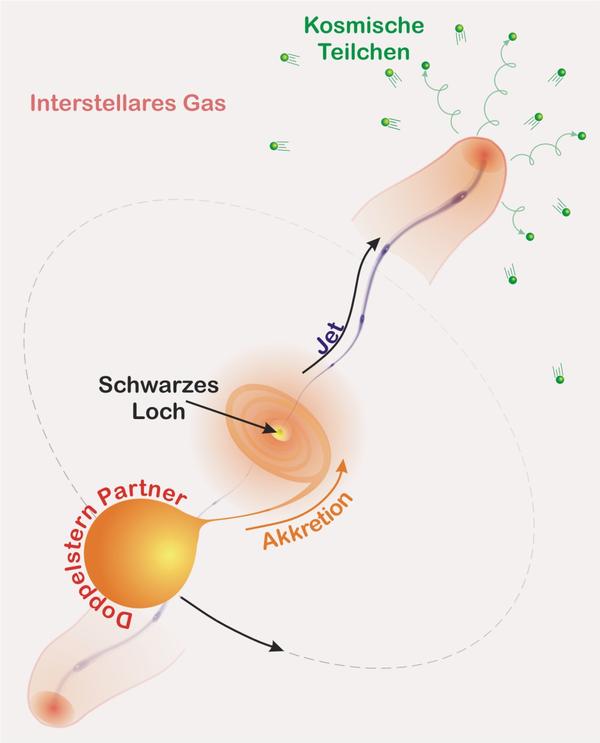Cosmic Rays as Messengers from Black Holes |
|
Scientists at the Max-Planck-Institut für Astrophysik investigate the emission of cosmic rays from Galactic Jets
The Milky Way Galaxy is permeated by highly energetic particles, which travel thrugh space with veloctities very close to the speed of light. According to the standard paradigm, these cosmic ray particles originate almost exlusively in the remnants of past supernova explosions.Scientists at the Max-Planck-Institut für Astrophysik have now investigated the possibility that a measurable fraction of these particles is produced in the jets of compact objects (black holes and neutron stars). These jets are flows of matter traveling away from compact objects at relativistic velocities very close to the speed of light. These high velocities are direktly inferred from measurements of apparent jet velocities of larger than speed of light.

|
| Figure 1: Cartoon of the particle acceleration scenario in Galactic jets: The jets (blue) are ejected from the inner regions of an akkretion disk of material transferred from a binary companion (orange) to a black hole. At the interface between the jet and the interstellar matter (pink), highly energetic particles (green) are released and propagate away from the jet. |
The interface where these beams of matter interact with the interstellar gas is a natural site for the production of highly energetic particles (see figure). Because the matter inside the jets already travels very close to the speed of light, unlike the gas in supernova remnants, the energy spectrum of the cosmic ray particles produced by the jets should differ fundamentally from the smooth powerlaw spectrum of the particles produced in supernova remnants, which constitute the bulk of the cosmic rays. The conversion of the bulk kinetic energy of the flow into particle energies leads to the formation of narrow spectral features with mean energy close to the specific kinetic energy of the jet
On their way through the Milky Way, these particles could be measured by satellites above the Earth's atmosphere, such as AMS II, to be flown on the International Space Station ISS. Such measurements could provide deep insight into the nature of jets and their places of origin, the compact onjects, and measure their level of activity in the Galactic neighborhood in the past.
Sebastian Heinz
Further information:
| MPA-Home |